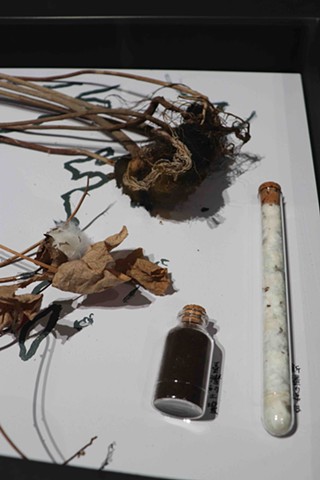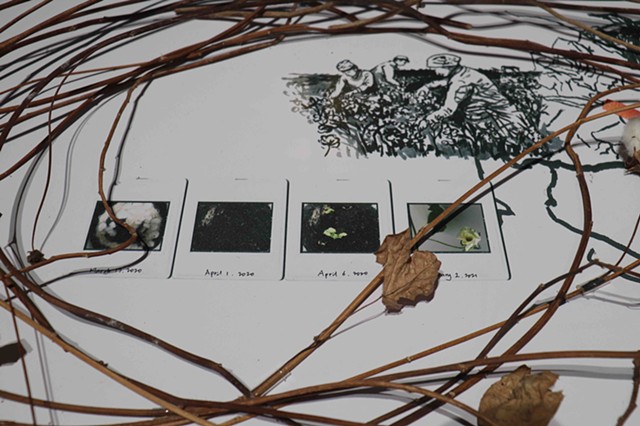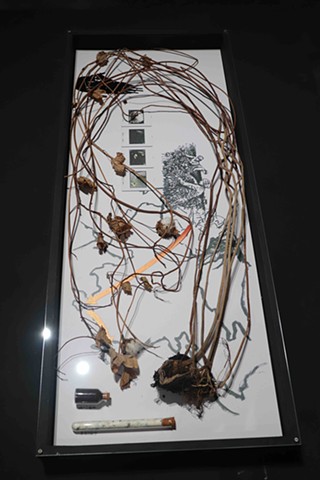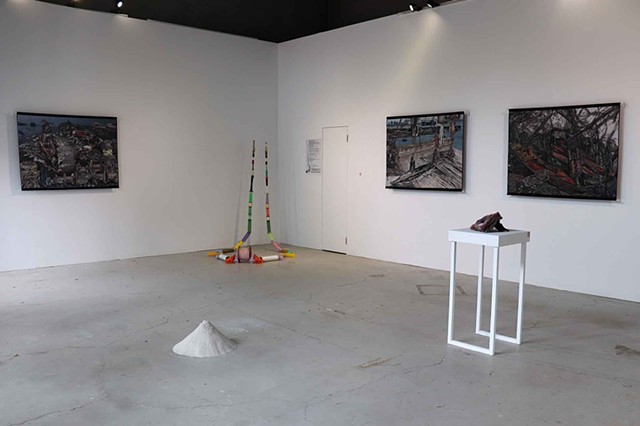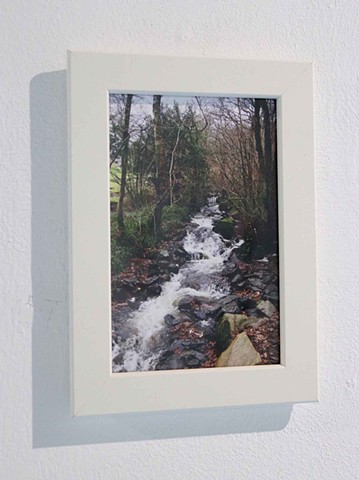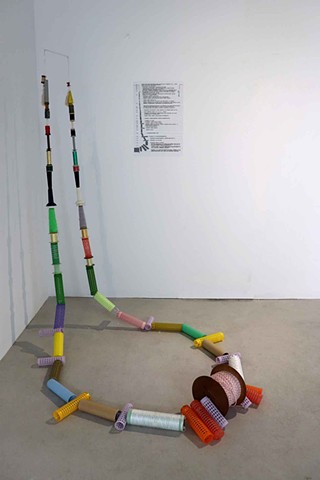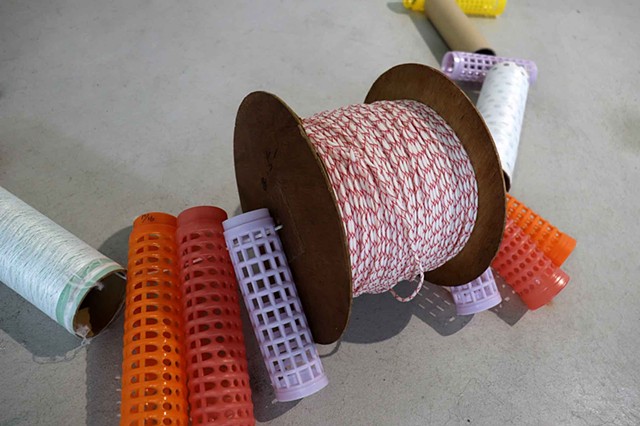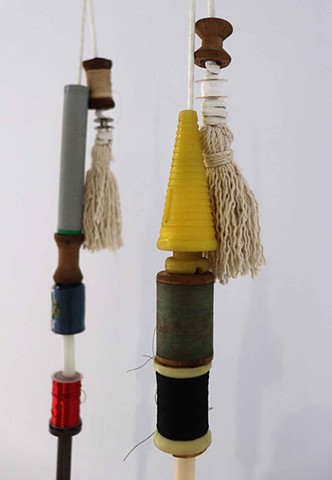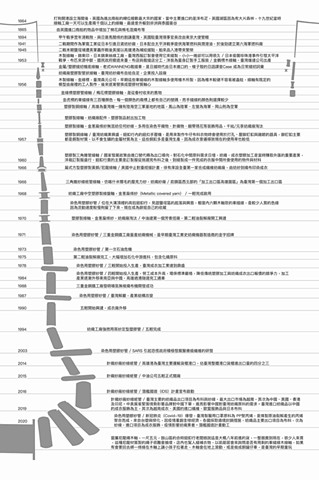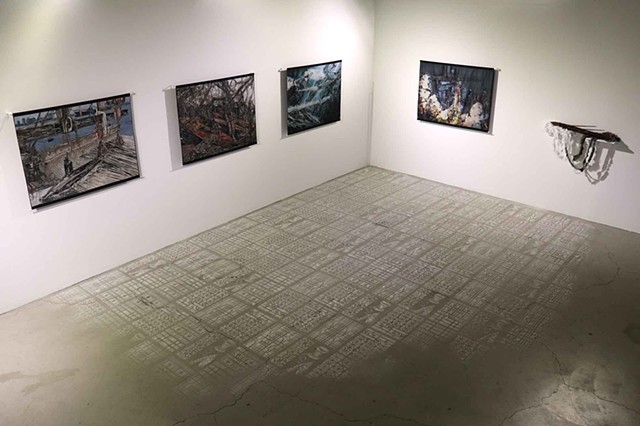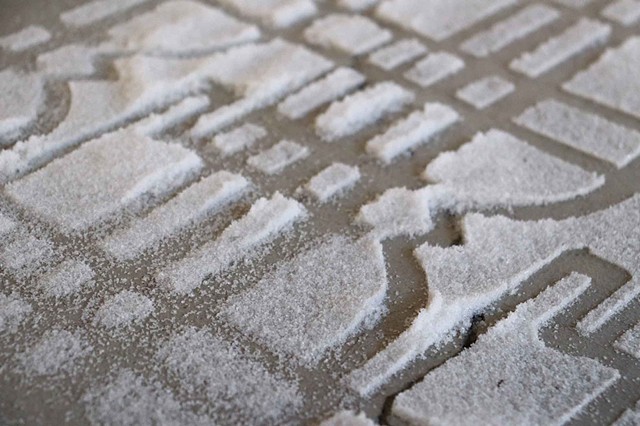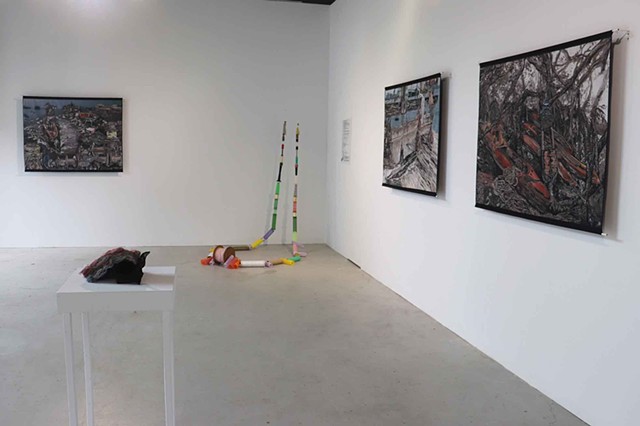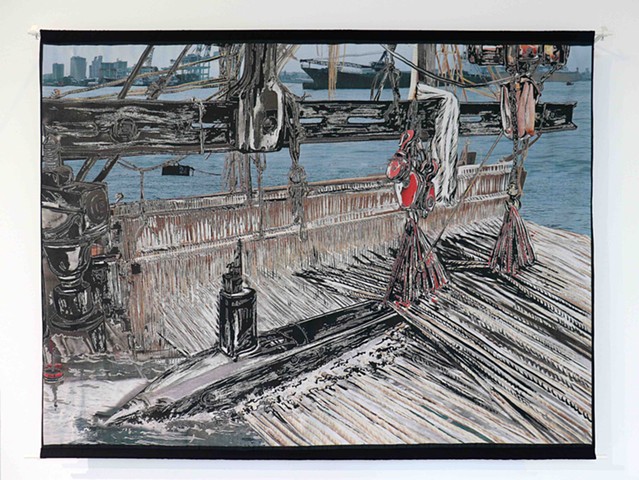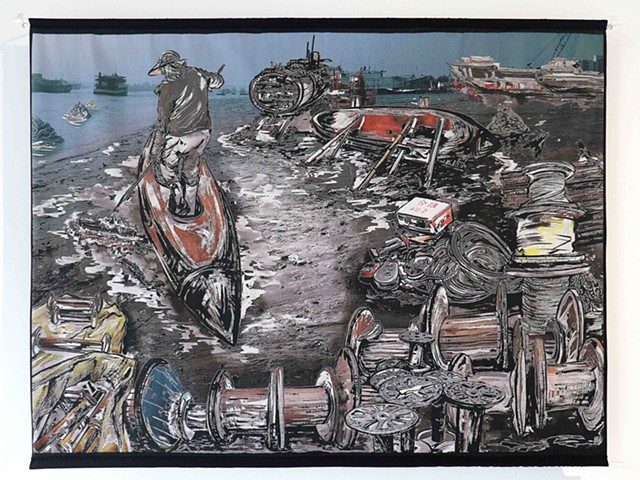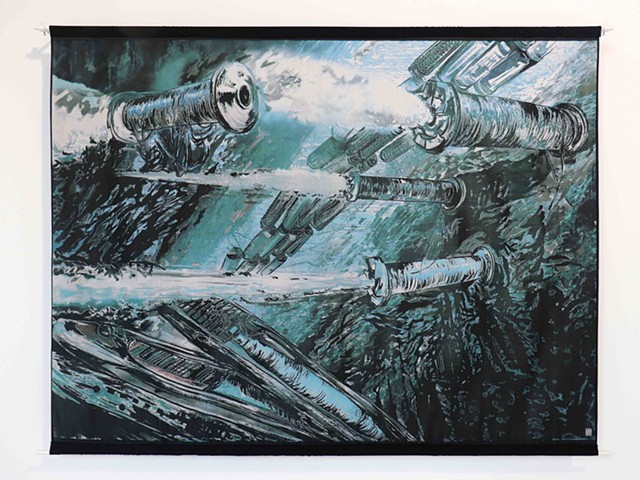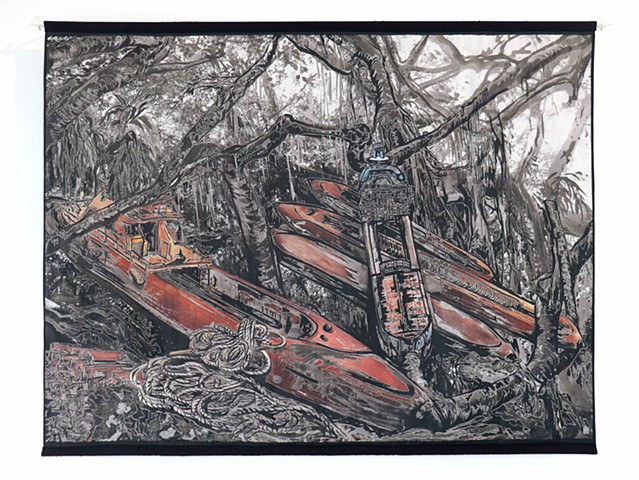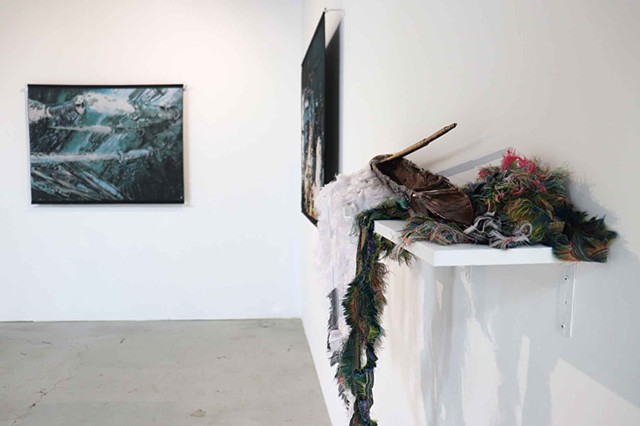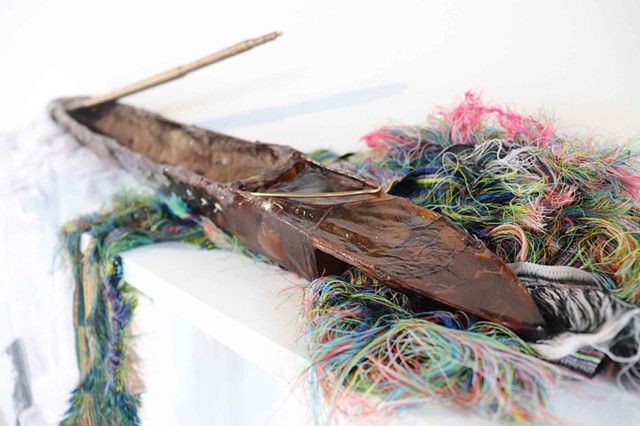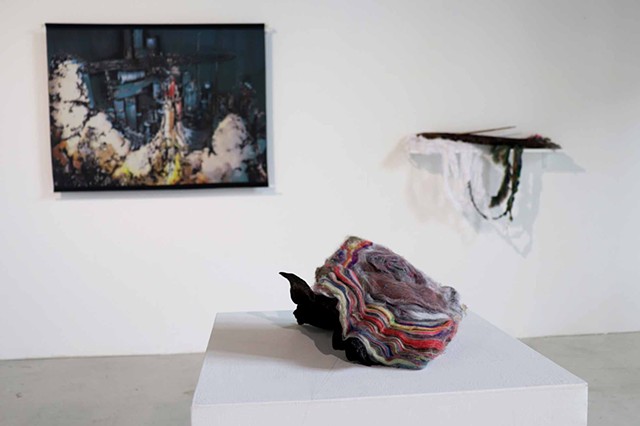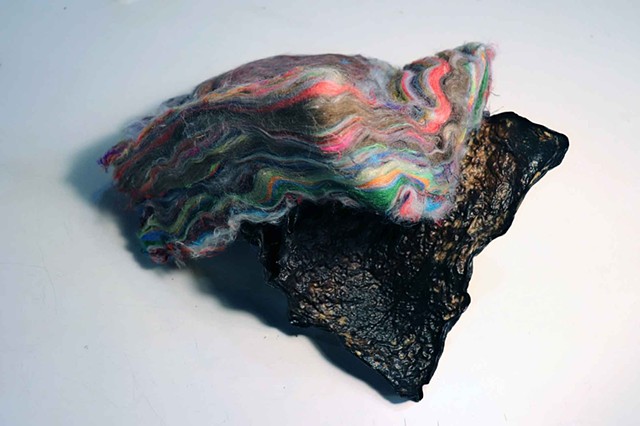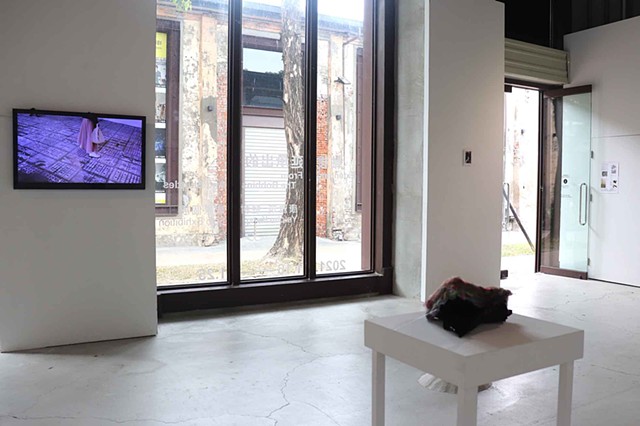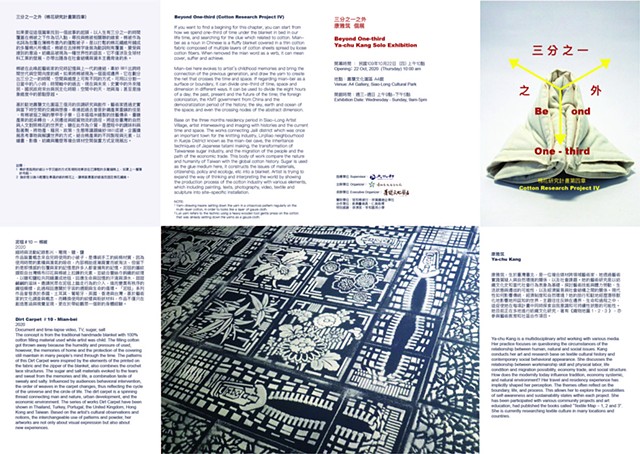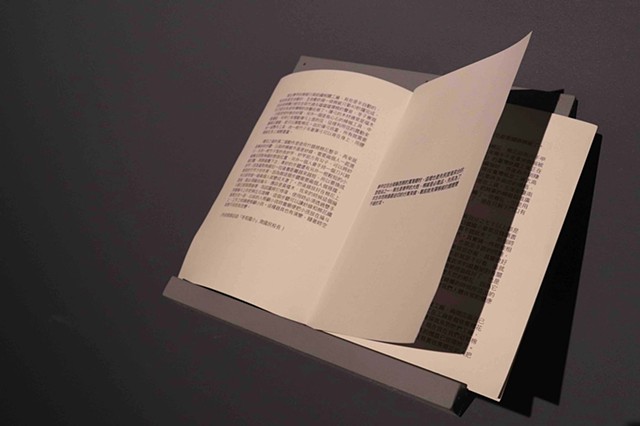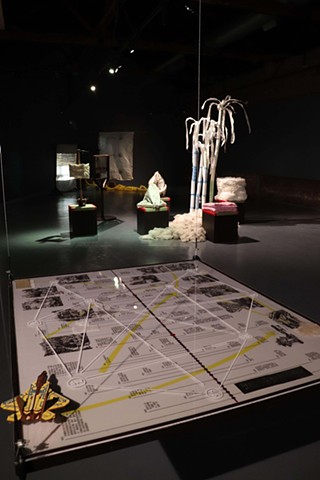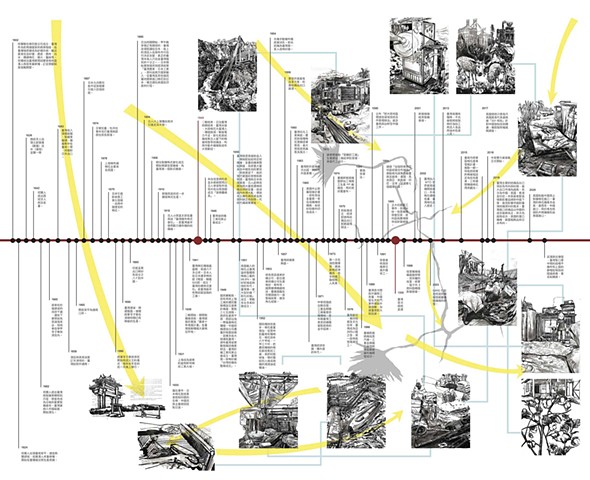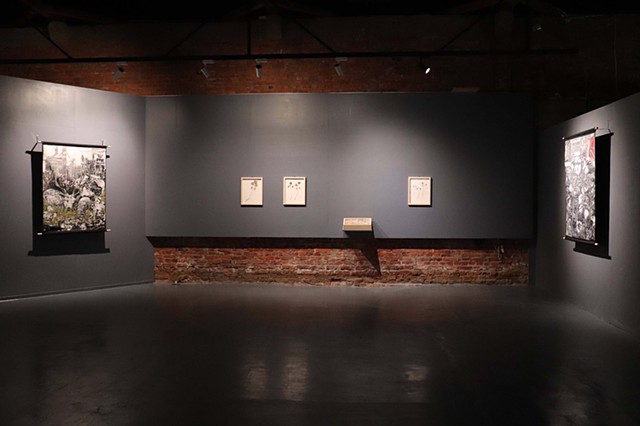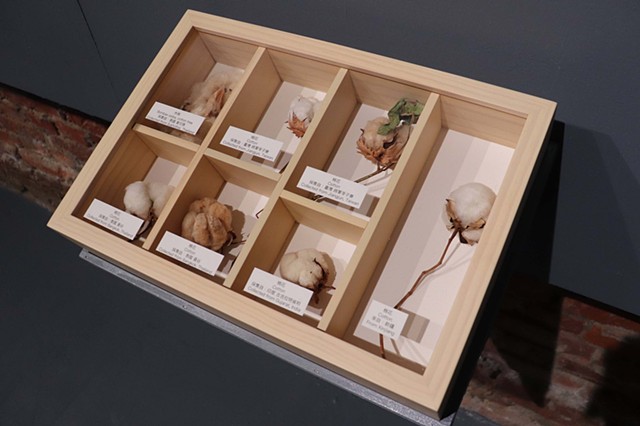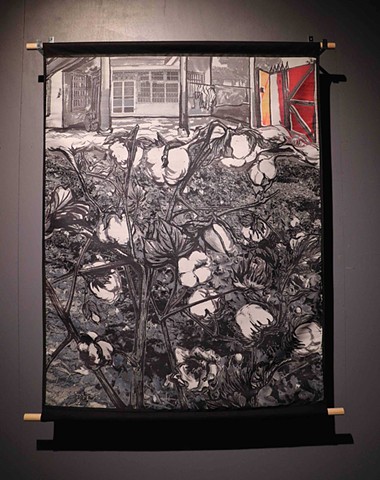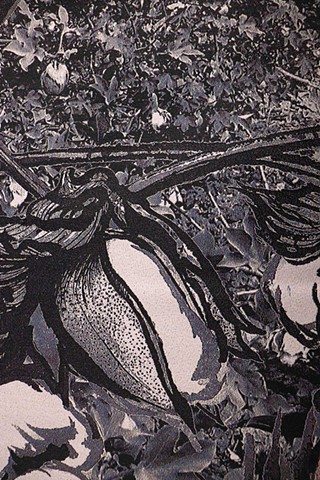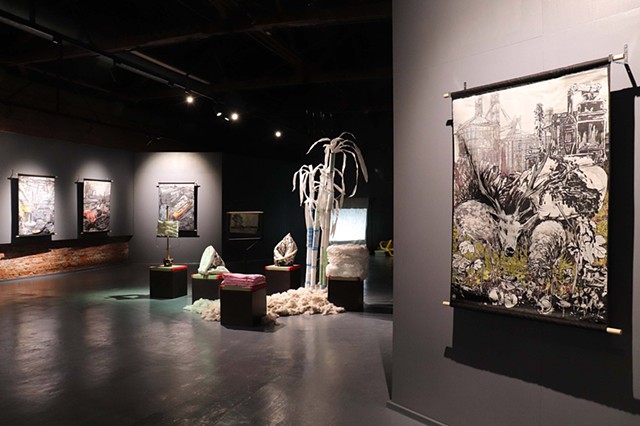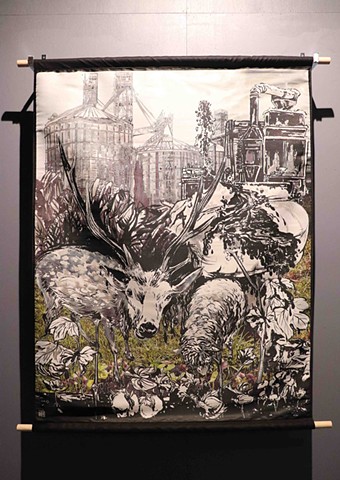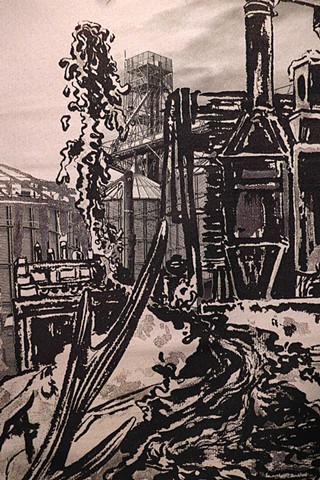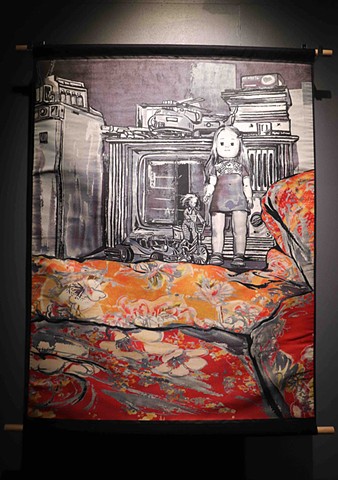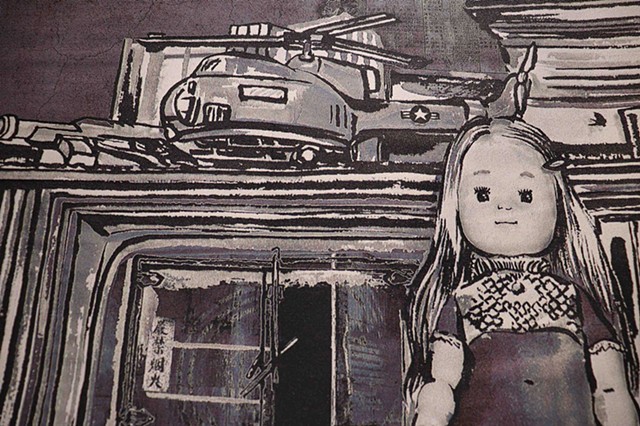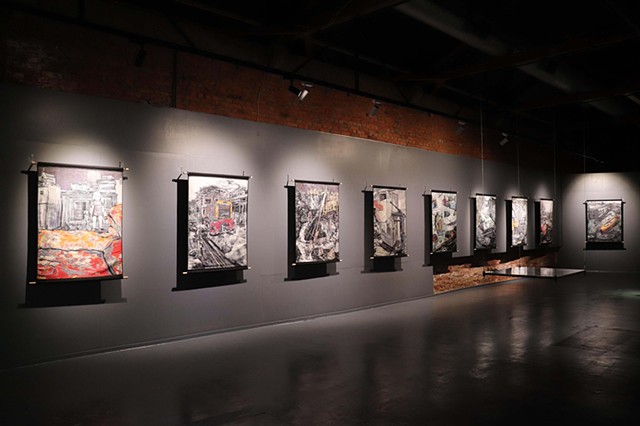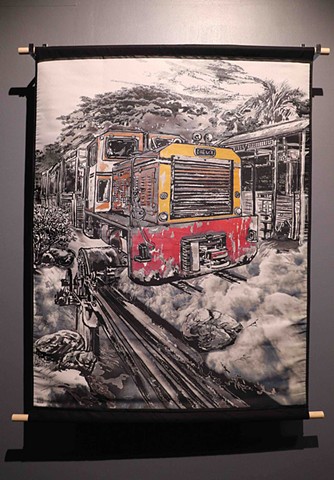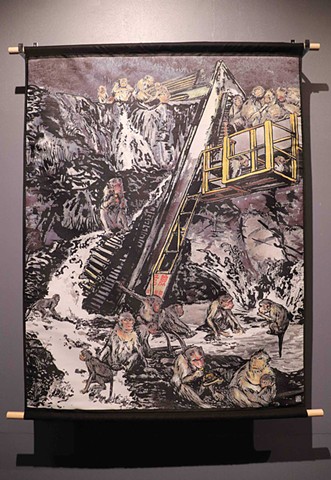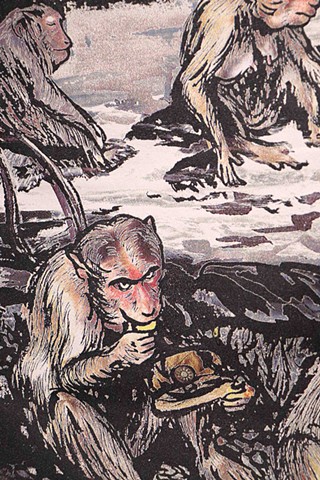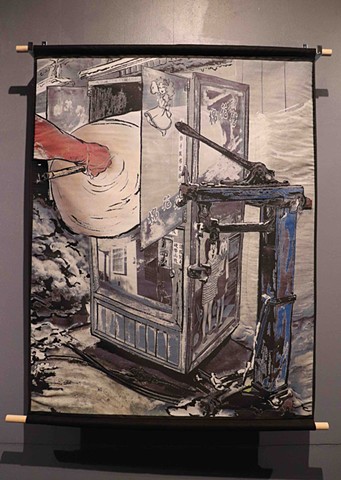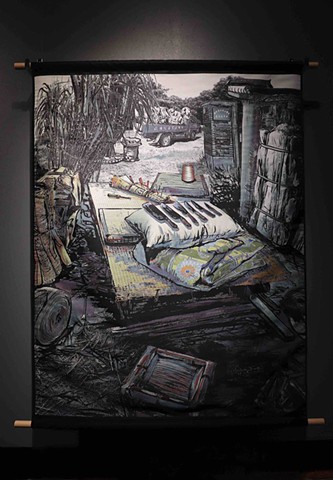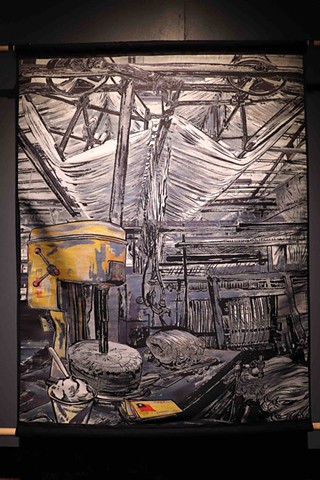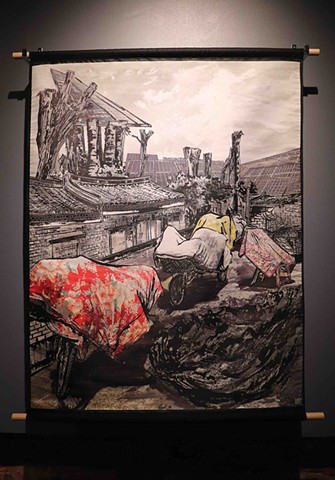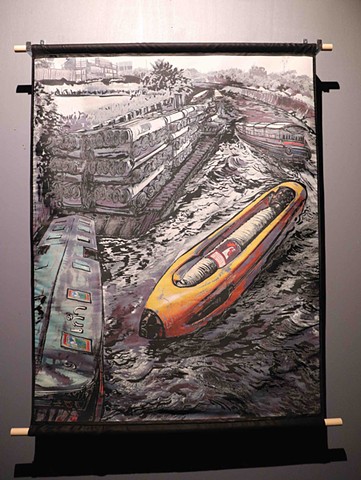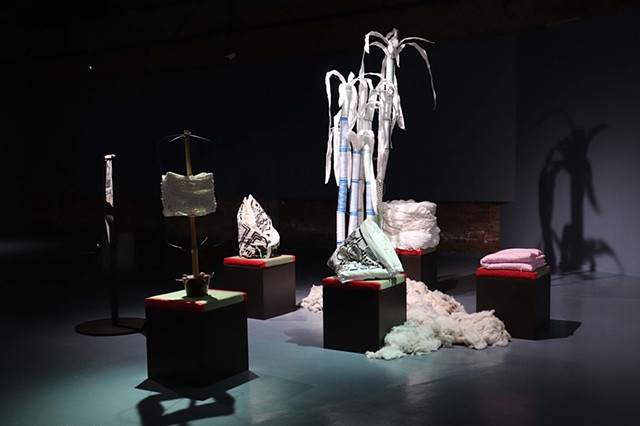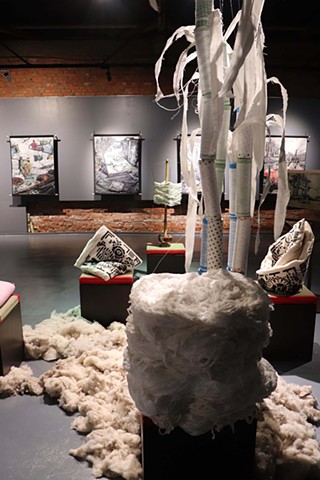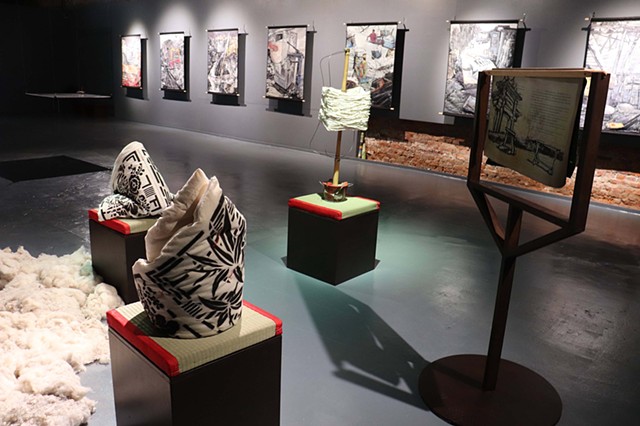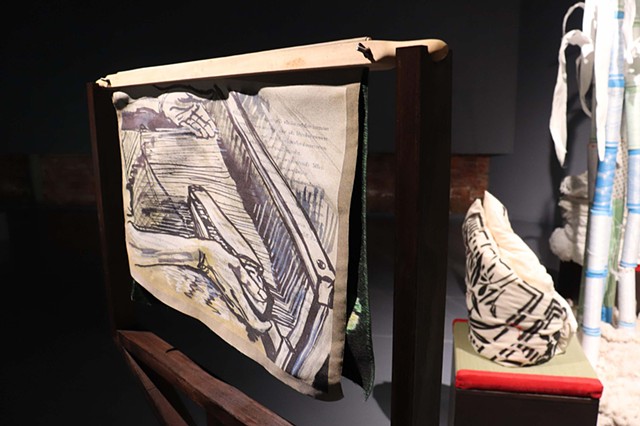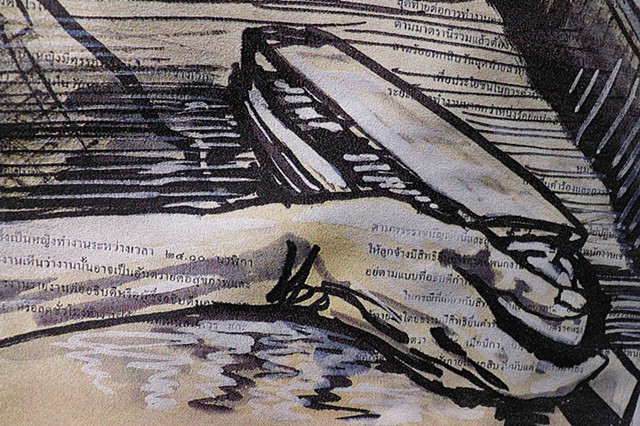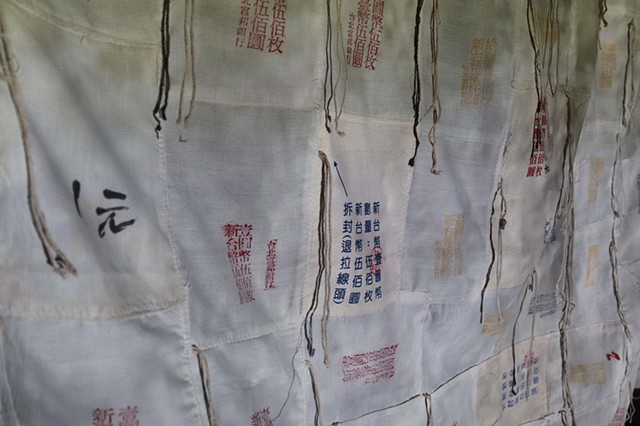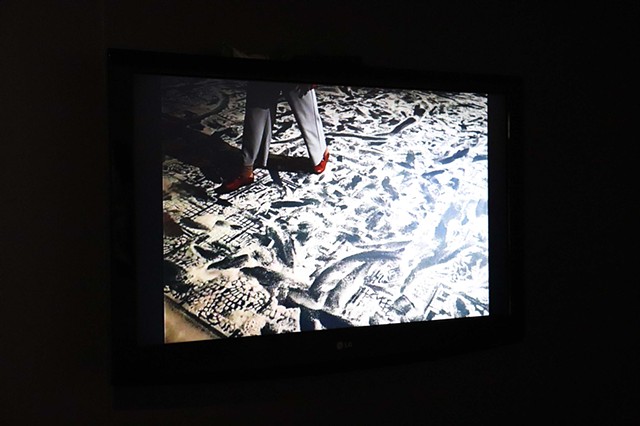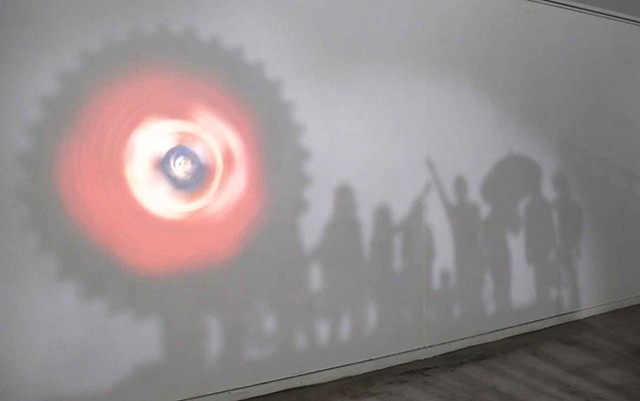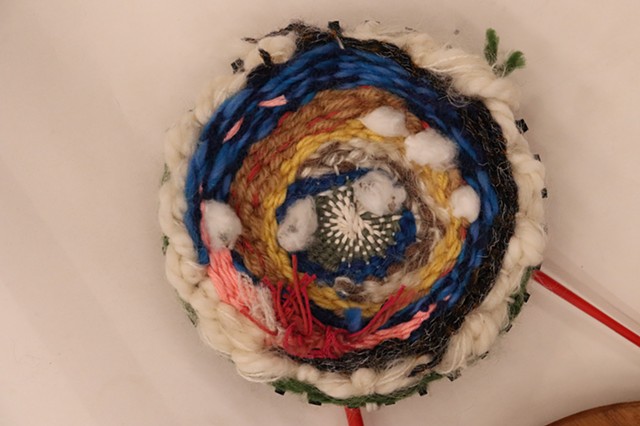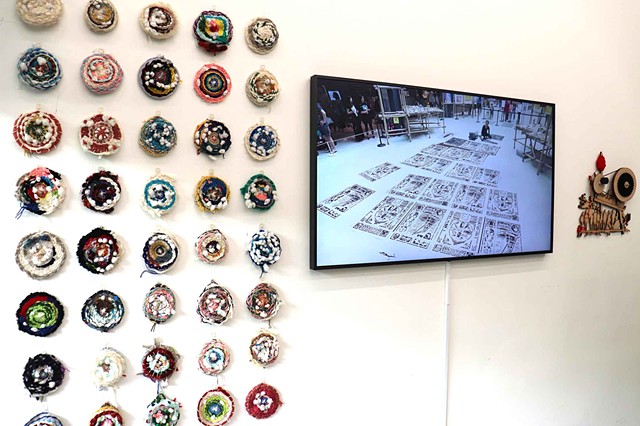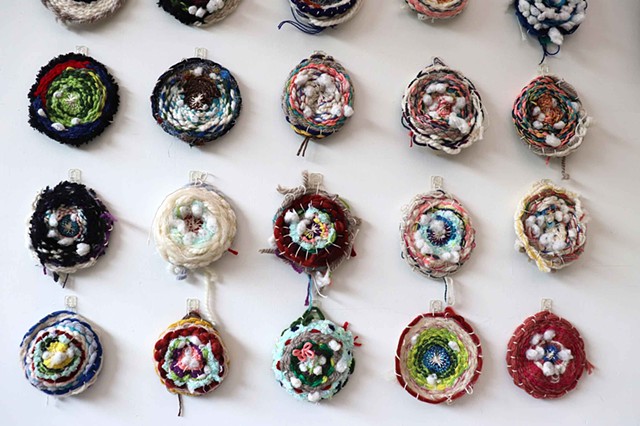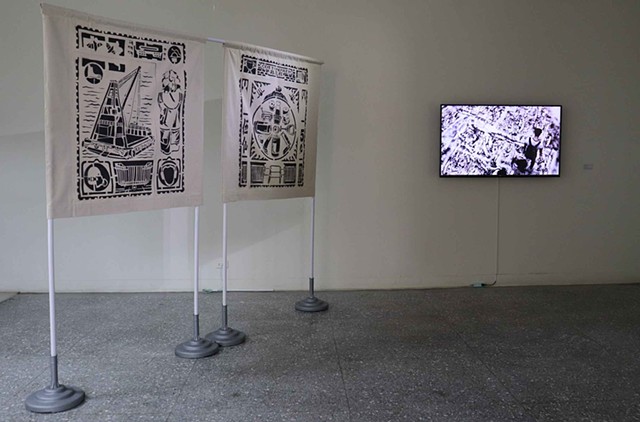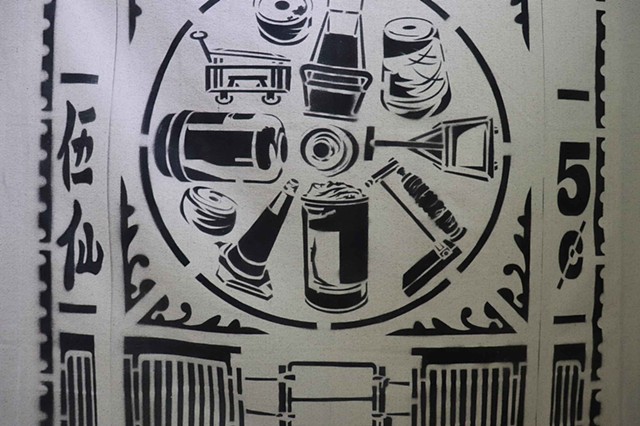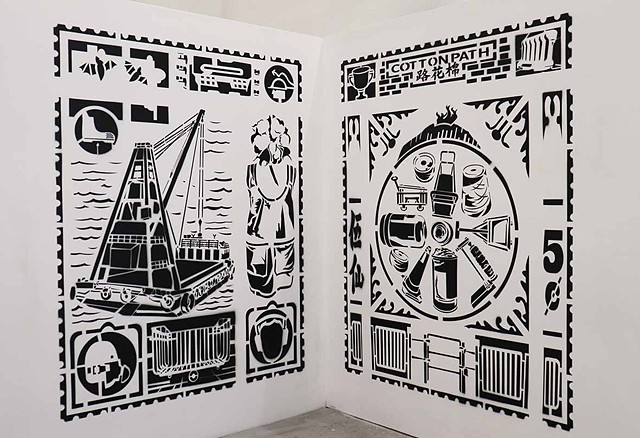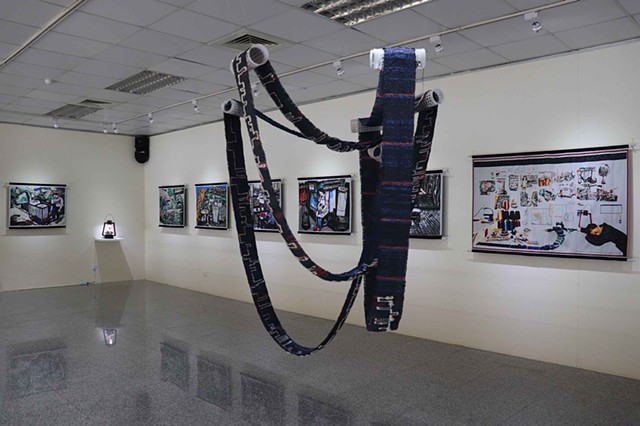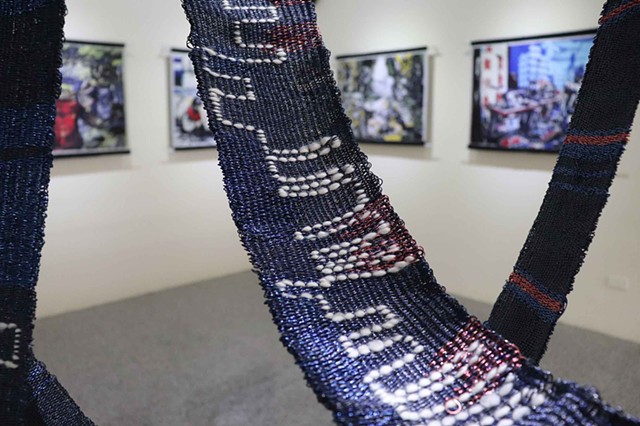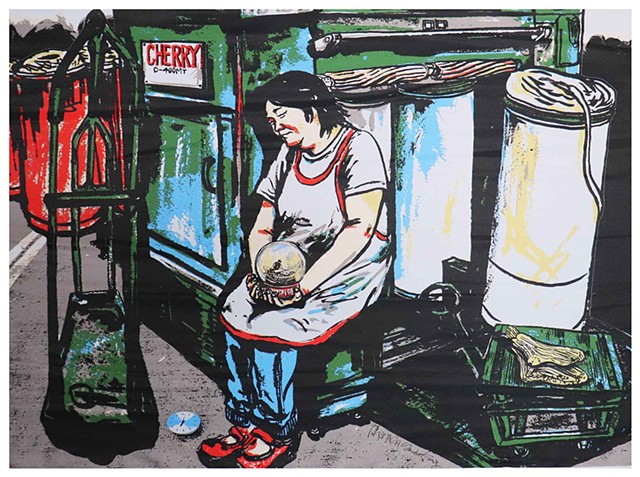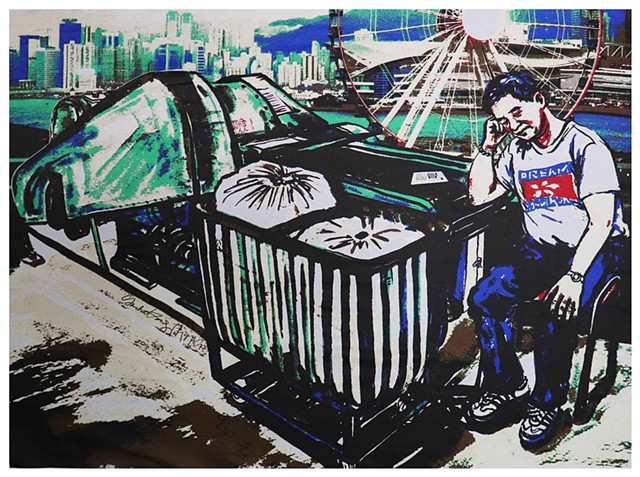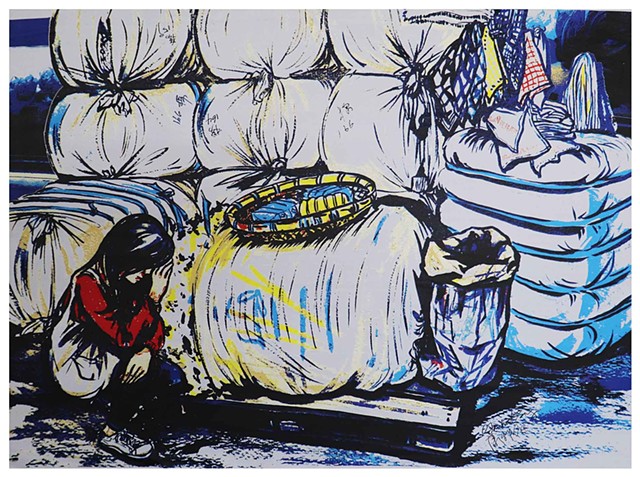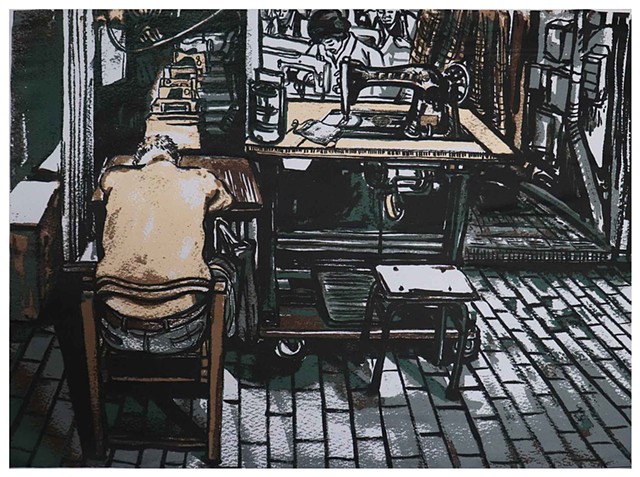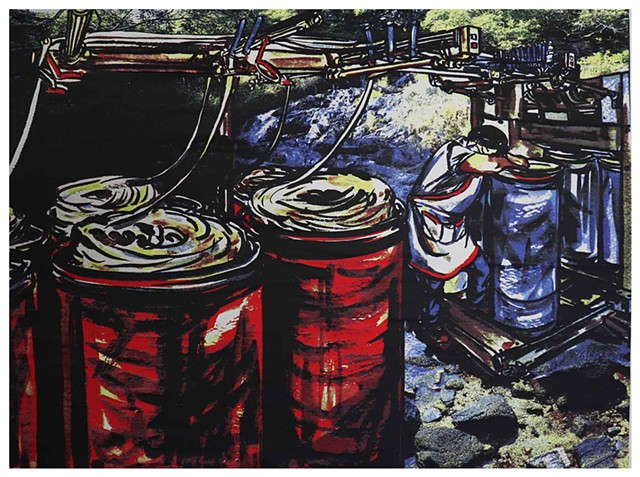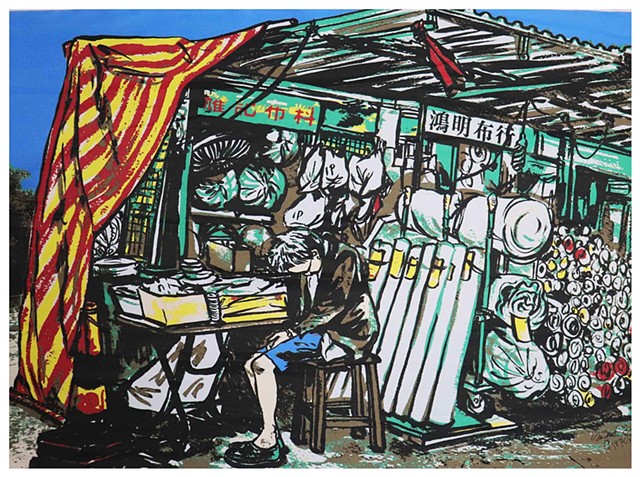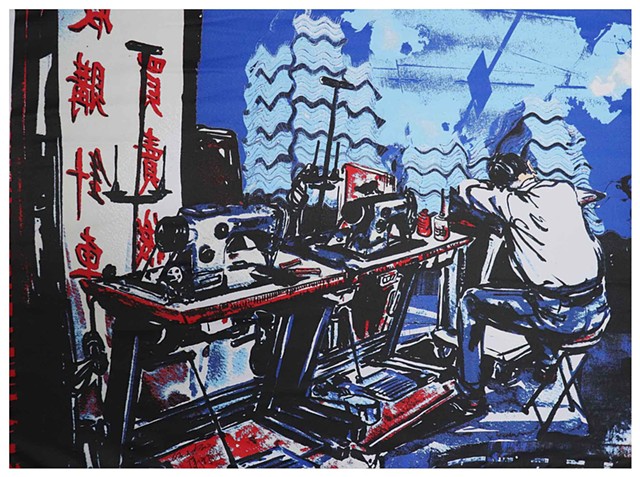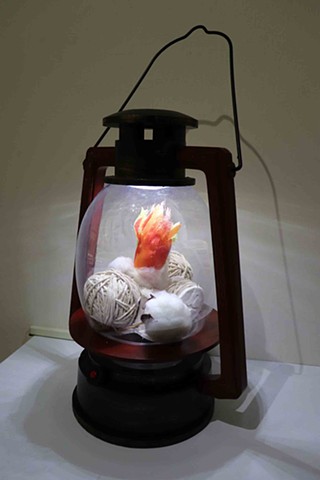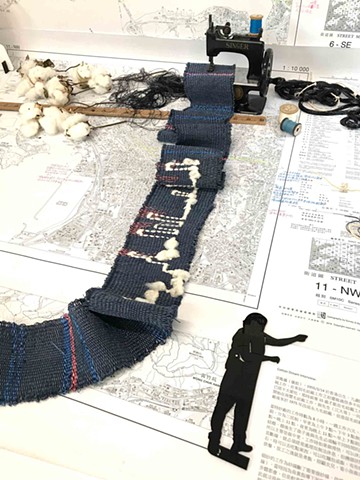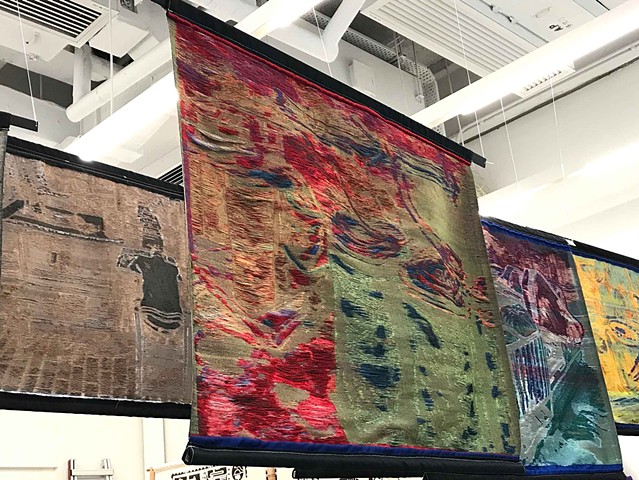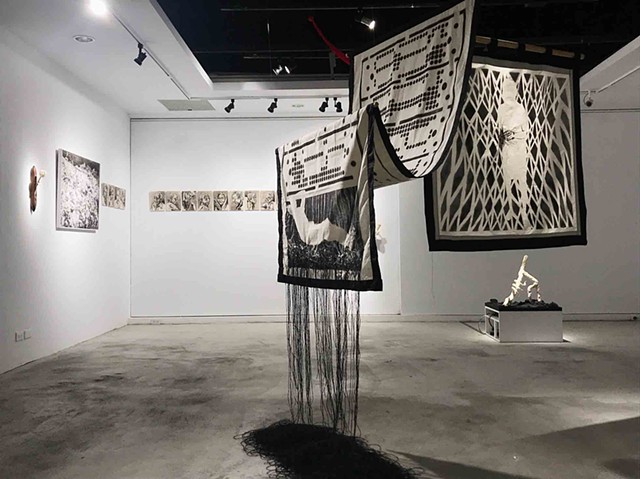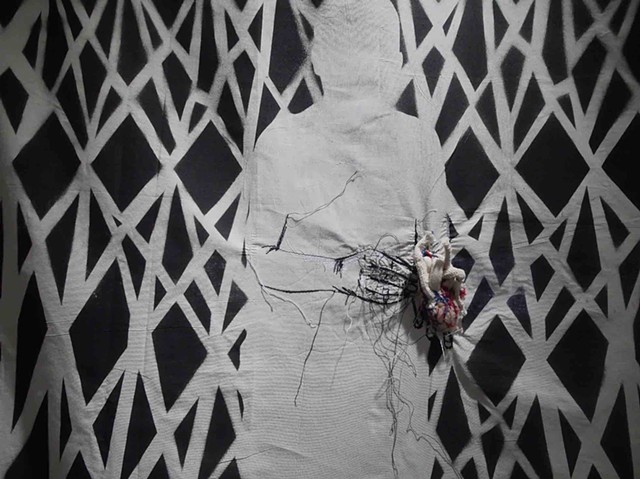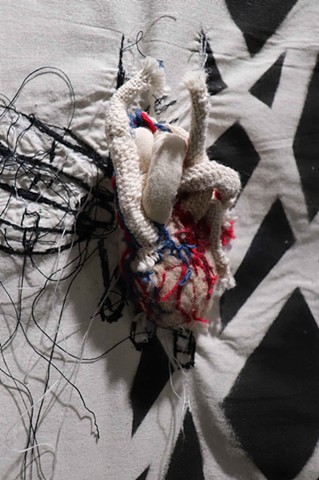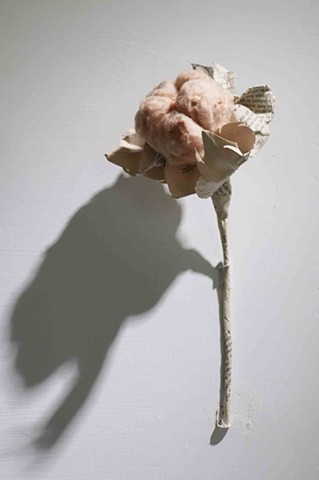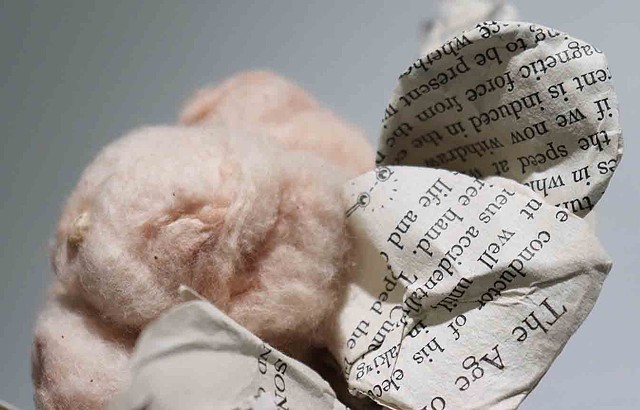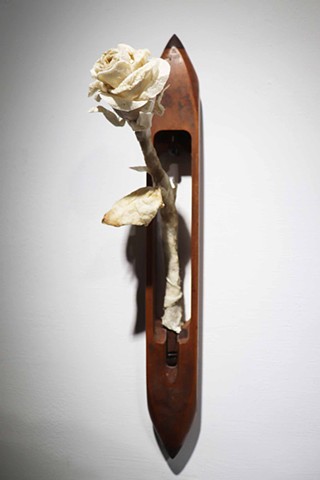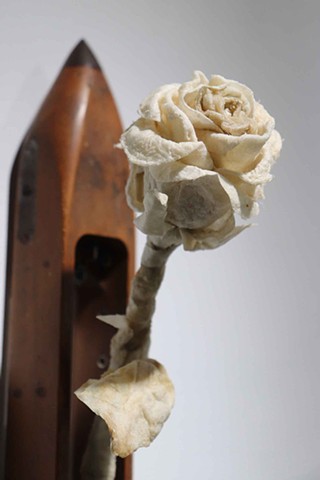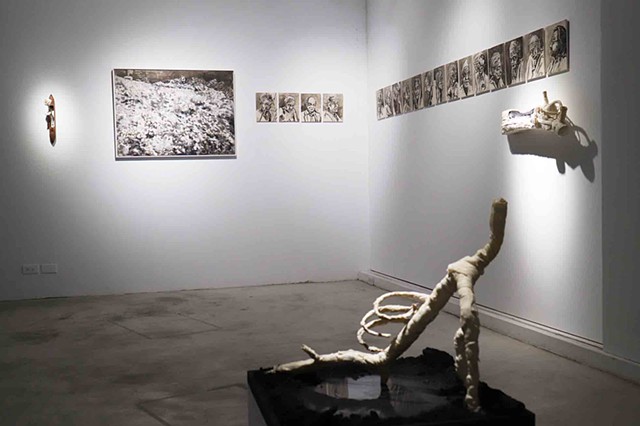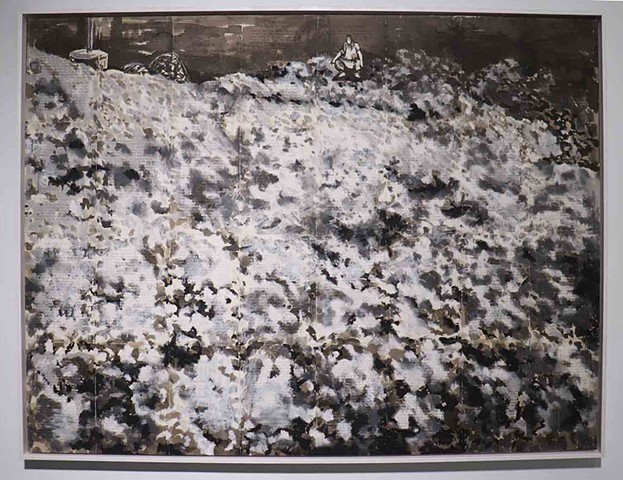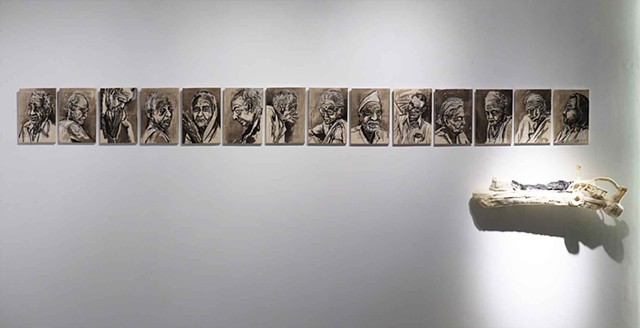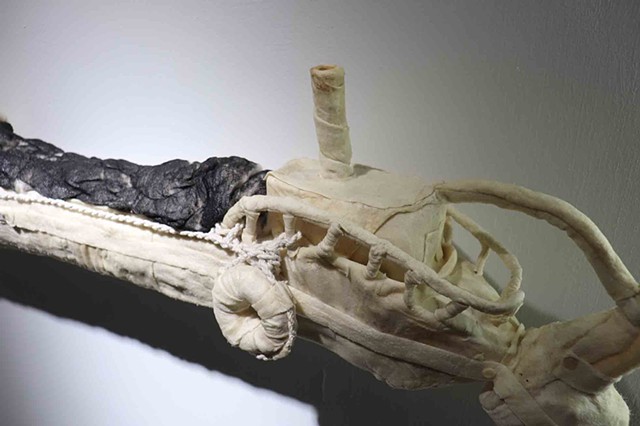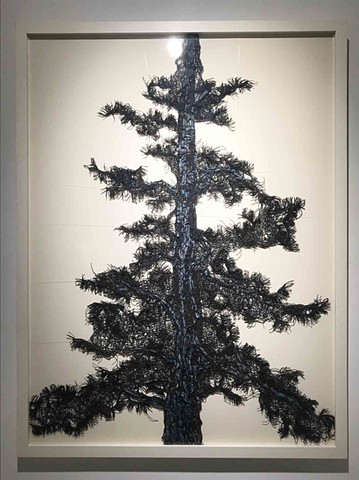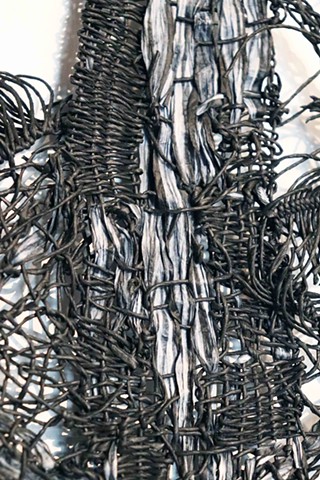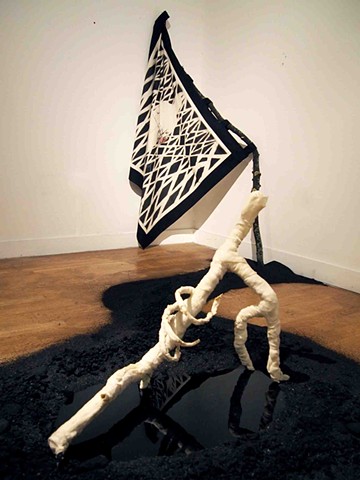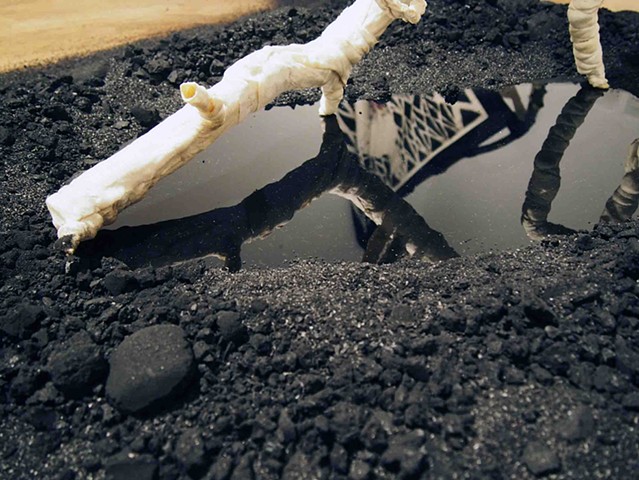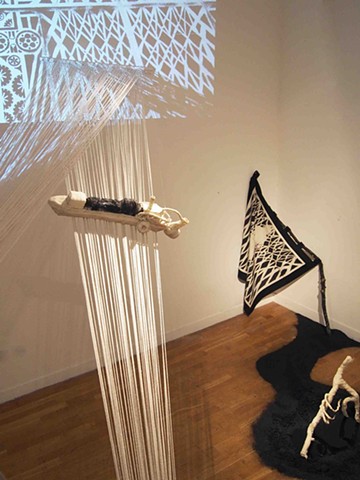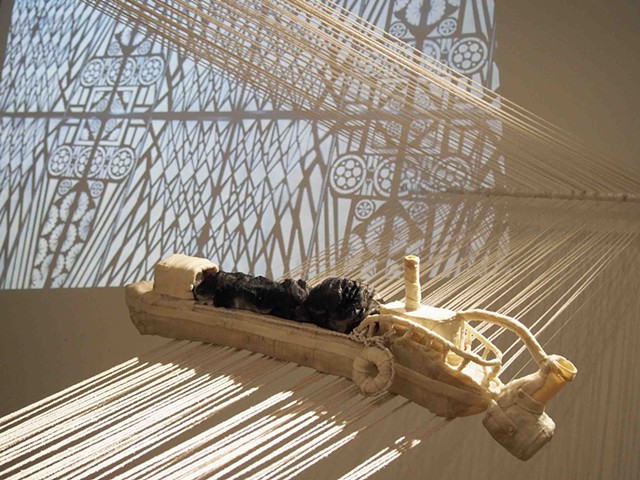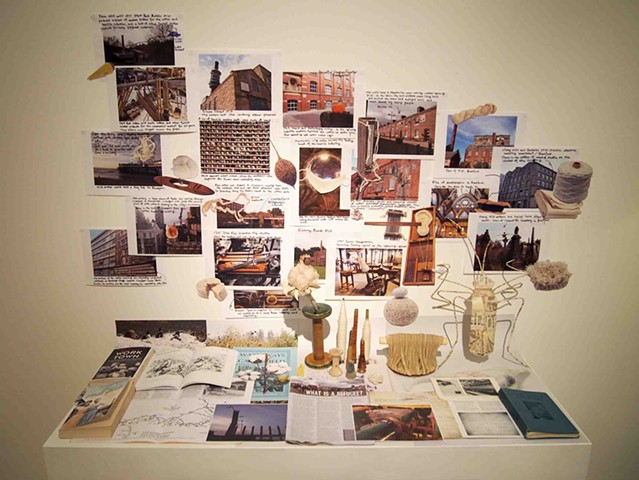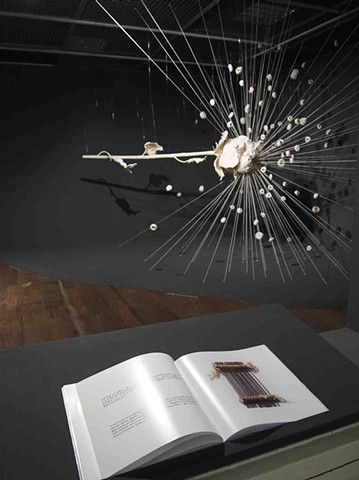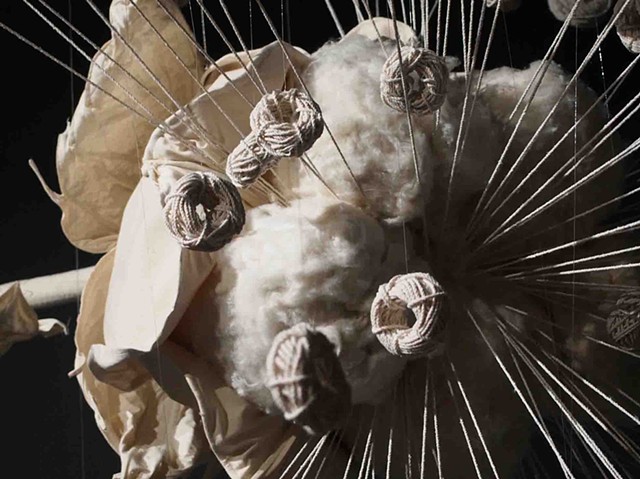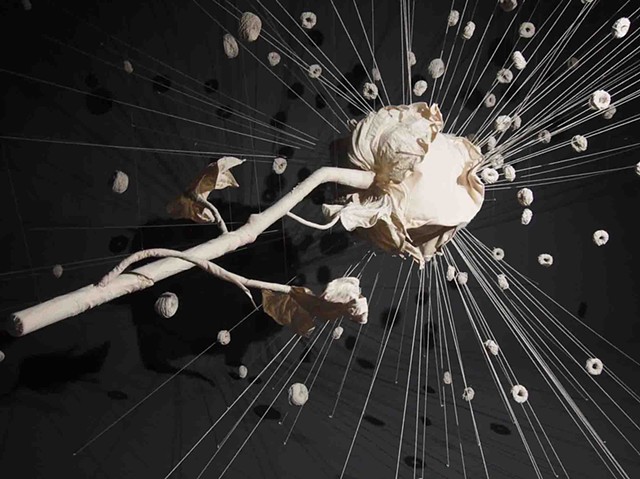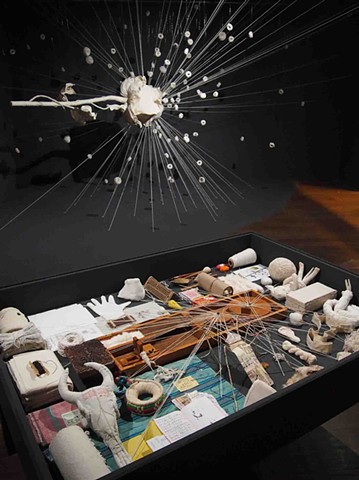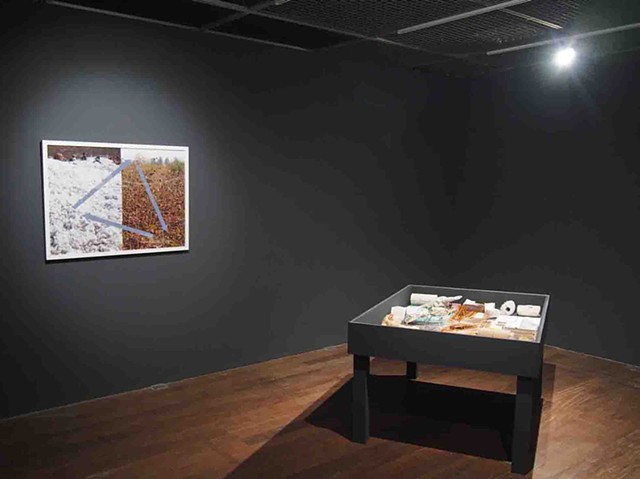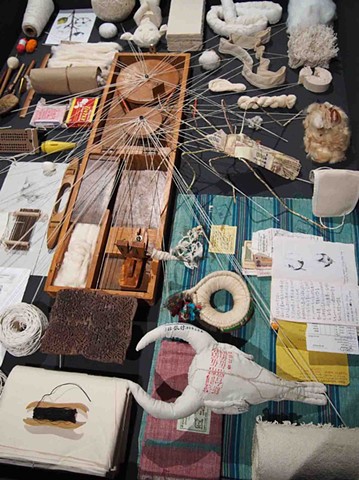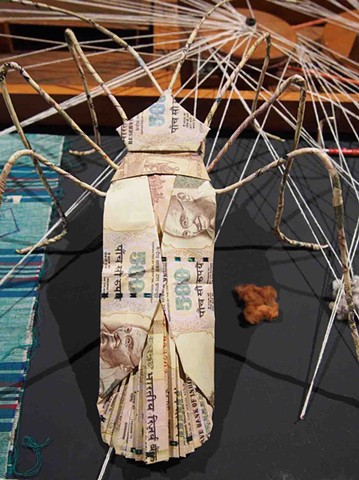COTTON Project
Chapter VI - White Gold (USA, Lao, Thailand, Taiwan)(2023 ~ 2024)
Chapter V - Extending From The Bobbins And Shuttles (Kaohsiung, Taiwan) (2021)
Chapter IV - Beyond One-third (Tainan, Taiwan) (2020)
Chapter III - Cotton Dream (Hong Kong) (2019)
Chapter II - Mill, Coal, Canal and Worker (Manchester, UK) (2018)
Chapter I - Everything about Cotton is about Cotton (India & Taiwan) (2018)
The work of this exhibition is selected from four chapters of the "Cotton Research Project", which includes the researches and art projects I did in India, Manchester, Hong Kong and Taiwan. The project is not just about material, it is through the links and the intertwined stories relate to the history documentary, the present society, industry, nature, trade and migration. The "Cotton Research Project II – Mill, Coal, Canal and Worker" was based in Manchester where the humid weather was a predominant factor in the region. The 18th-19th century transformation from a normal English town into an industrial powerhouse which initiated the industrial revolution. Rain is an iconic part of Mancunian life and although it could be seen as depressing, it has allowed for the effective spinning of cotton. This work is moving with the times and referencing the cities transition from an industrial past to a postindustrial future. The "Cotton Research Project III – Cotton Dream" was based in Hong Kong during my three-month residency in the end of 2019. Tsuen Wan was a former textile industrial area created by land reclamation. From a trolley used in the textile industry, to the road sign of Cotton Path, and even the way that Hong Kong Island was formed by a volcano, came together to form the Dirt Carpet stamp. As a Taiwanese experiencing the period of social movement which began from anti-extradition bill movement upheaval in Hong Kong, I found myself grappling with the sense of identity and the relationship between Hong Kong, Taiwan and China. Depending on different visitors, display locations and social conditions, the work can be given a wide interpretation.
Textiles are being presented as a world language and evoke questions about our economy systemic and natural environment. This project relates to the development of the global materials industry and how the modern consumer culture today is affecting traditional culture. I am not only interested in the industry process and history of cotton mills per se, the project is a vehicle for ‘spinning the yarn’ to extend the imagination and awareness about the life we are living in. In this work spinning is not just a technical action, it is a metaphor for turning around and around. How could we keep the balance without creating too much tension? Textiles and threads here are not stitched to create the borders; they are woven into different interfaces and layers to eliminate boundary, create connection and encourage dialogue.
































